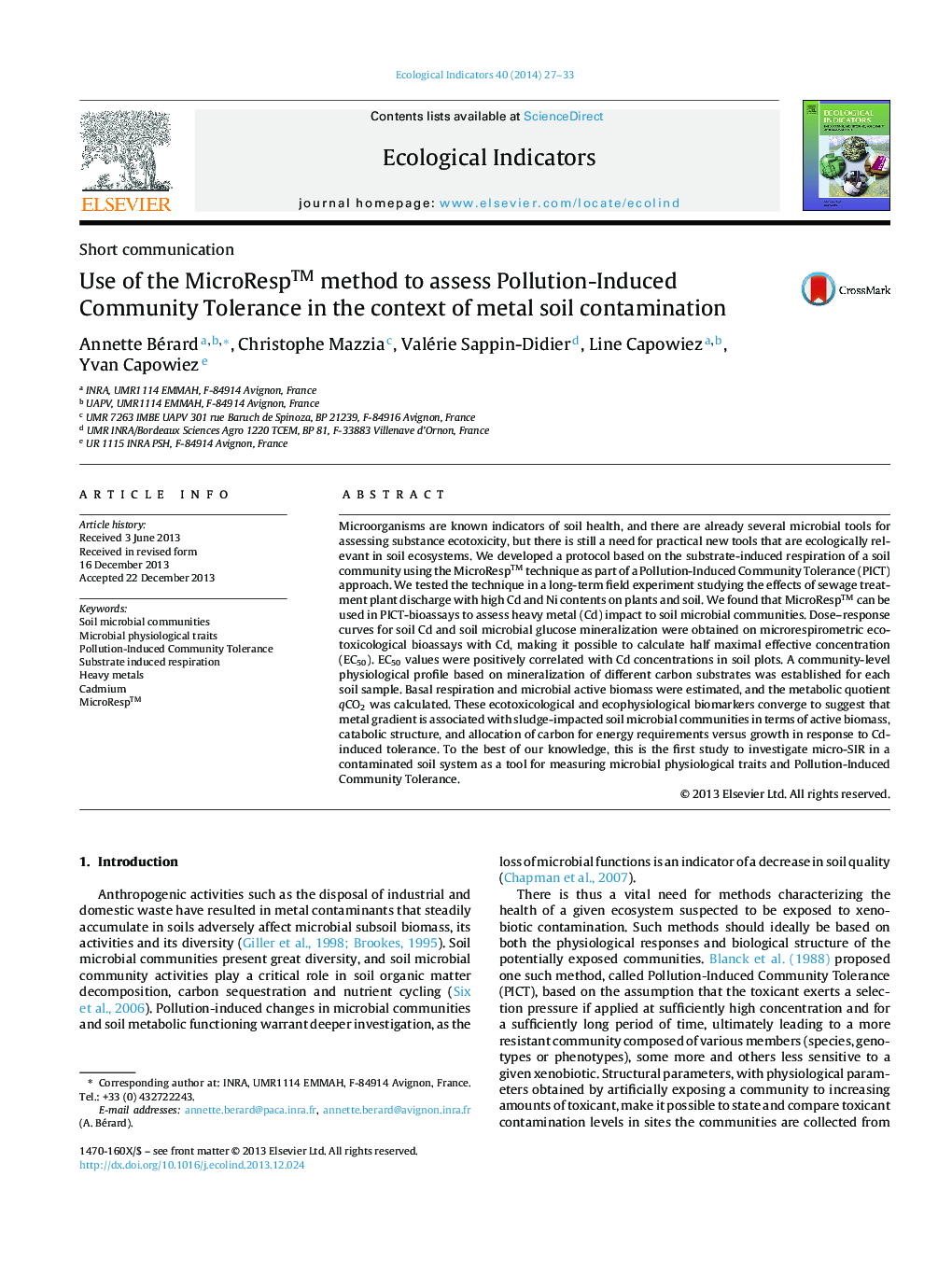| کد مقاله | کد نشریه | سال انتشار | مقاله انگلیسی | نسخه تمام متن |
|---|---|---|---|---|
| 4373227 | 1617161 | 2014 | 7 صفحه PDF | دانلود رایگان |

• MicroResp™ used in PICT-assays to assess metal impact to soil microbial communities.
• PICT observed in a long-term field experiment with high Cd soil contamination.
• The long-term metal (Cd) contamination induced a shift in catabolism structure.
• Metabolic quotient increased with Pollution-Induced Community Tolerance.
• Allocation of carbon for energy requirements versus growth in response to Cd-PICT.
Microorganisms are known indicators of soil health, and there are already several microbial tools for assessing substance ecotoxicity, but there is still a need for practical new tools that are ecologically relevant in soil ecosystems. We developed a protocol based on the substrate-induced respiration of a soil community using the MicroResp™ technique as part of a Pollution-Induced Community Tolerance (PICT) approach. We tested the technique in a long-term field experiment studying the effects of sewage treatment plant discharge with high Cd and Ni contents on plants and soil. We found that MicroResp™ can be used in PICT-bioassays to assess heavy metal (Cd) impact to soil microbial communities. Dose–response curves for soil Cd and soil microbial glucose mineralization were obtained on microrespirometric ecotoxicological bioassays with Cd, making it possible to calculate half maximal effective concentration (EC50). EC50 values were positively correlated with Cd concentrations in soil plots. A community-level physiological profile based on mineralization of different carbon substrates was established for each soil sample. Basal respiration and microbial active biomass were estimated, and the metabolic quotient qCO2 was calculated. These ecotoxicological and ecophysiological biomarkers converge to suggest that metal gradient is associated with sludge-impacted soil microbial communities in terms of active biomass, catabolic structure, and allocation of carbon for energy requirements versus growth in response to Cd-induced tolerance. To the best of our knowledge, this is the first study to investigate micro-SIR in a contaminated soil system as a tool for measuring microbial physiological traits and Pollution-Induced Community Tolerance.
Journal: Ecological Indicators - Volume 40, May 2014, Pages 27–33